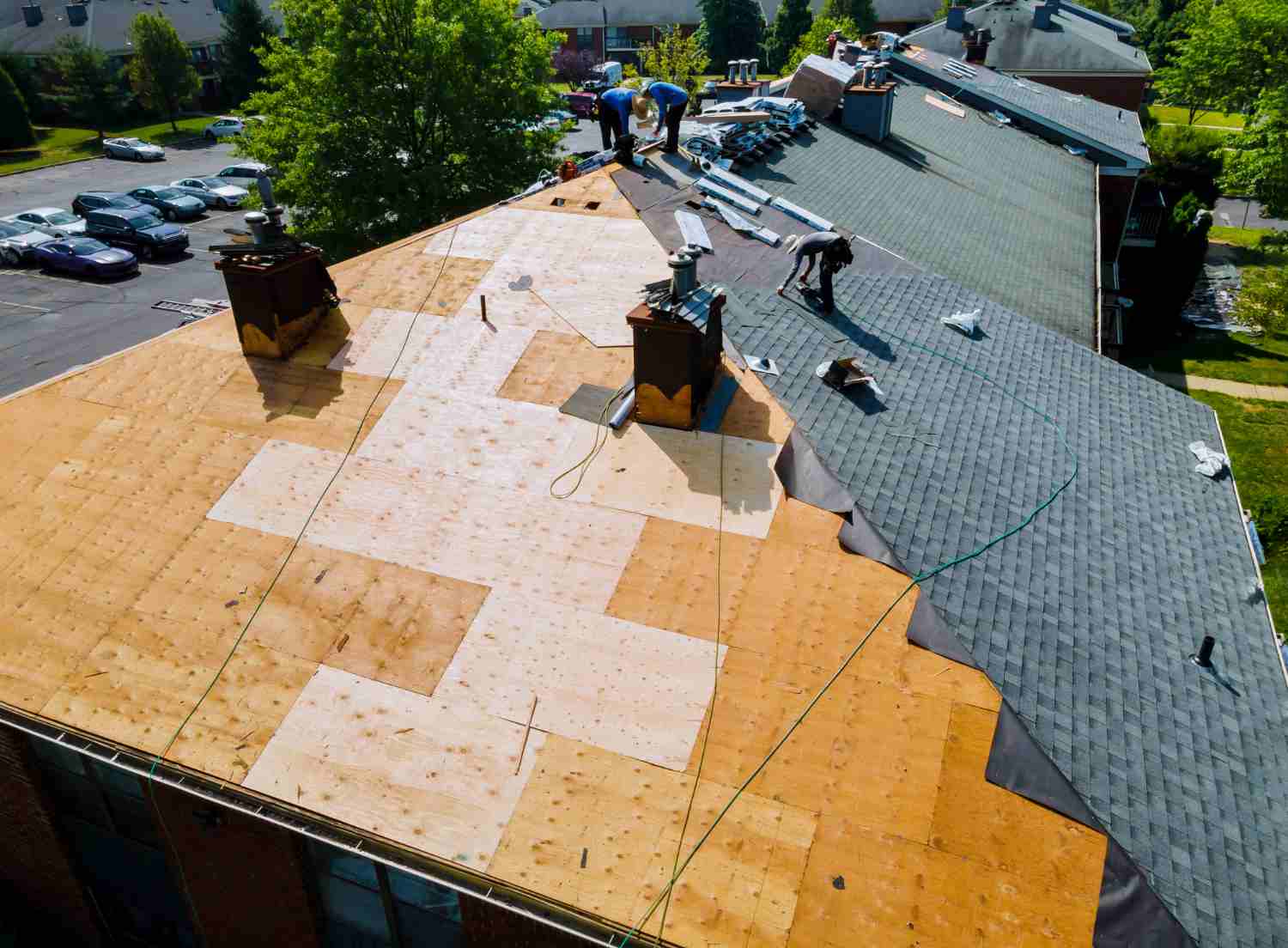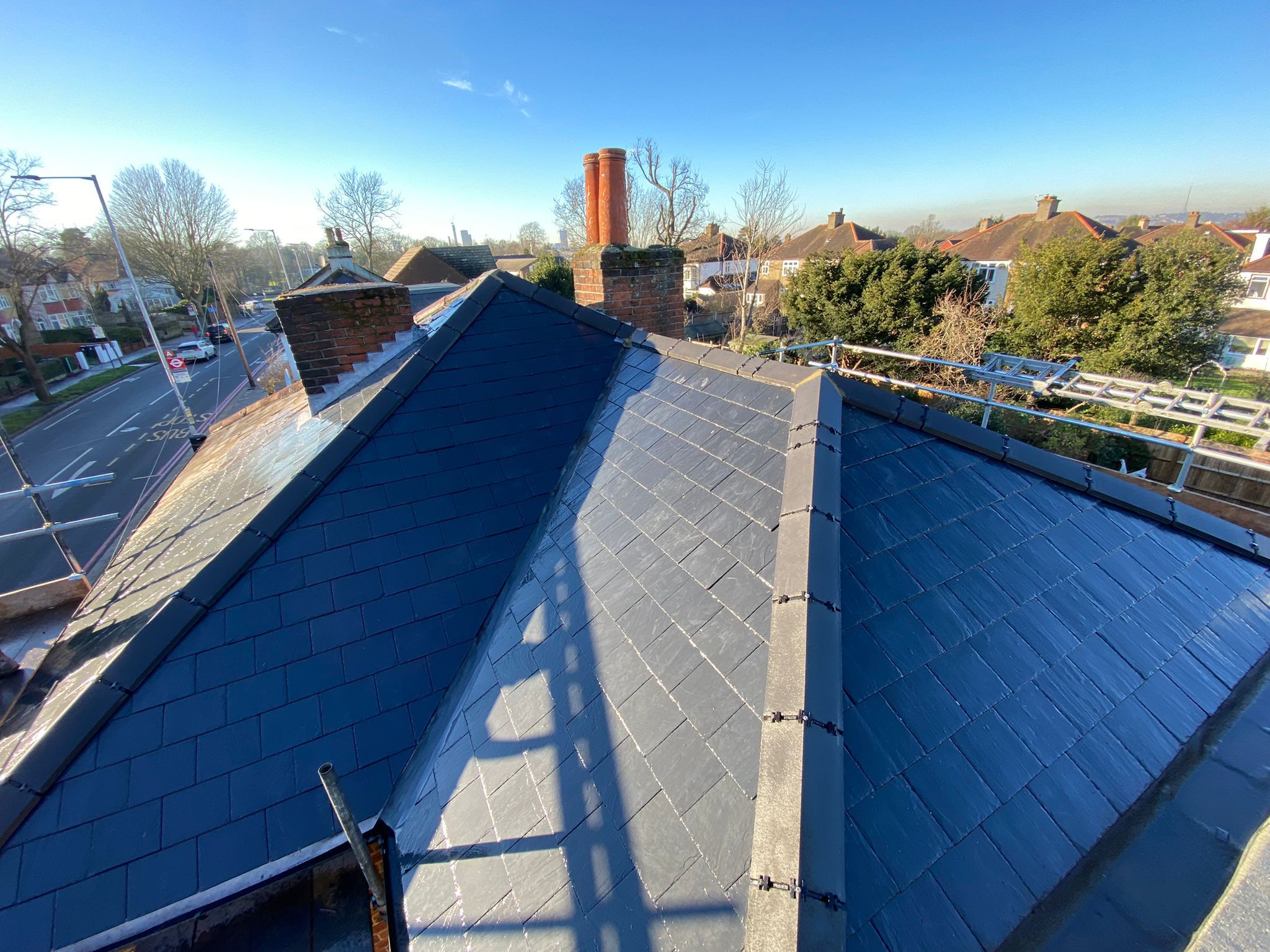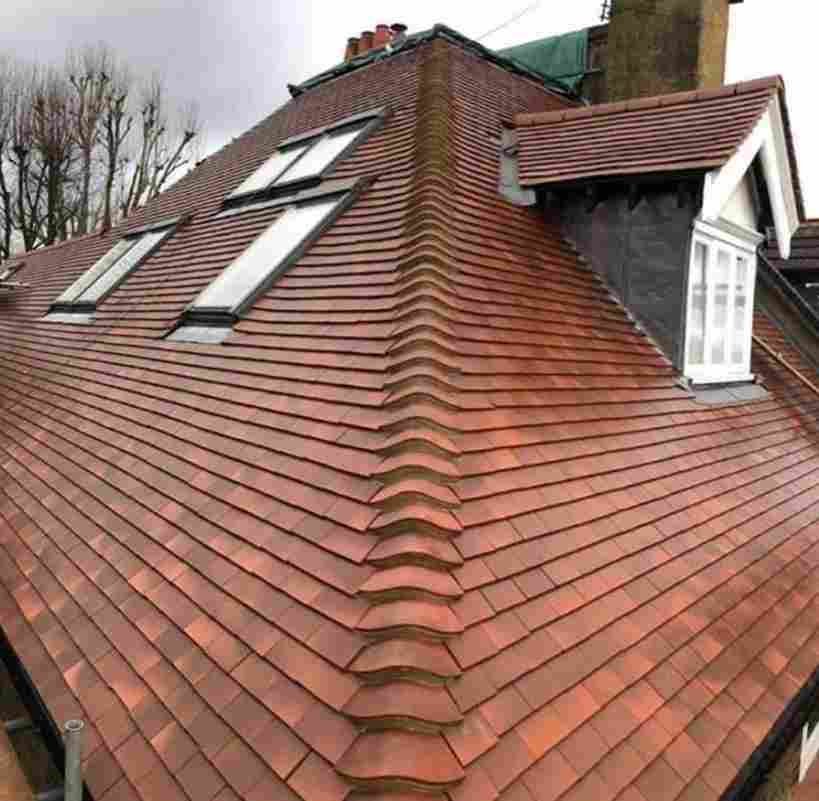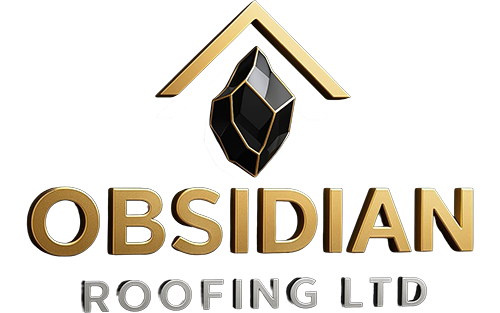On This Page Bargeboards play a crucial role in roofing by providing functional and aesthetic benefits. These long, vertical boards are installed at the gable
Table of Contents

Bargeboards play a crucial role in roofing by providing functional and aesthetic benefits. These long, vertical boards are installed at the gable ends of a roof, covering the exposed edges of the roof structure.
Functionally, bargeboards help to protect the roof from water damage by preventing rainwater from seeping into the roof structure and causing rot or decay. They also act as a barrier against wind-driven rain and help channel water away from the building, protecting the walls and foundation.
They can be intricately designed and decorated, adding character and charm to a building’s exterior. In addition, bargeboards can be made from various materials, such as wood, PVC, or metal, offering flexibility in design options and durability. Overall, bargeboards are significant elements in roofing systems, serving both practical and decorative purposes.
Advantages of Bargeboards
In addition to the functional benefits mentioned, bargeboards offer several other advantages:
Protection against Weather Elements
Bargeboards act as a protective barrier, shielding the roof lining from harsh weather conditions. They help to prevent water infiltration, keeping the roof dry and minimising the risk of leaks or water damage.
By sealing the roofing edges, bargeboards provide additional protection against wind, preventing drafts and improving energy efficiency.
Enhanced Roof Longevity
The proper installation of bargeboards can extend the roof’s lifespan by reducing the exposure of vulnerable areas to moisture, wind, and other weather-related factors. By preventing water from seeping into the roof structure, bargeboards help preserve the roof’s integrity, minimising the risk of rot, decay, or structural damage over time.
Improved Curb Appeal
One of the primary benefits of bargeboards is that their presence enhances your property’s look. By adding a finishing touch to the roofline, bargeboards contribute to the overall visual appeal of the building.
They can be designed in various styles and finishes, allowing customisation to match the architectural style and personal taste. Bargeboards can provide a distinctive and attractive feature that adds character, charm, and uniqueness to the property.
Architectural Versatility
While bargeboards are historically associated with Victorian and Edwardian-era properties, modern designs have evolved to suit various architectural styles.
Bargeboard designs are available to complement different building types and design aesthetics. You can install traditional, classic, contemporary and minimalist types.
This versatility allows homeowners to enhance the visual appeal of their property while maintaining architectural harmony.
Increased Property Value
Adding well-designed and properly installed bargeboards can positively impact the value of a property. The improved curb appeal, enhanced protection, and attention to detail demonstrated by the presence of bargeboards makes your property appealing to buyers and increases its market value.
Call Us To Get a Quick Response


Types of Bargeboards
Bargeboards come in various materials, each with its advantages and characteristics. Here are some common types of bargeboards:
Metal
Metal bargeboards, often made from aluminium or steel, are known for their durability and longevity. They offer excellent resistance against weather elements, including moisture, UV rays, and pests. Metal bargeboards can be powder-coated or painted to match the desired colour scheme, providing a sleek and modern look to the roof.
Timber
Timber bargeboards are traditional and popular due to their natural beauty and versatility. They can be crafted from different types of wood, such as cedar, pine, or oak, offering a range of textures and finishes. Timber bargeboards require regular maintenance, including sealing and painting, to protect against rot and decay. They add a warm and rustic charm to the roofline.
Plastic
Plastic bargeboards, often made from PVC or polyethene, are lightweight, affordable, and require little maintenance. They are resistant to moisture and insects, making them a practical choice for many homeowners. Plastic bargeboards come in various colours and finishes, allowing for customisation to match the aesthetic of the building.
uPVC
Unplasticised Polyvinyl Chloride (uPVC) bargeboards are plastic bargeboards known for their enhanced durability and weather resistance. uPVC bargeboards are highly durable, resistant to fading, and require minimal maintenance. They are available in various styles and colours, providing flexibility in design choices.
Fibre Cement
Bargeboards made from fibre cement offer durability, fire resistance, and aesthetic versatility. Fibre cement bargeboards are a mixture of cement, sand, and cellulose. They can mimic the appearance of wood while providing better resistance against rot, pests, and moisture. Fibre cement bargeboards are available in various textures and can be painted to match the desired colour scheme.
Composite
Composite bargeboards are constructed from different materials, such as wood fibres and recycled plastics.
These bargeboards offer the benefits of both materials, including the natural beauty of wood and the durability of plastic. Composite bargeboards are known for their resistance to rot, insects, and fading. They require minimal maintenance and are available in various styles and colours.
Synthetic Slate or Tile
Synthetic slate or tile bargeboards are designed to resemble natural slate or tile roofing materials. They are typically made from plastic, rubber, and recycled materials.
These bargeboards provide the aesthetic appeal of traditional slate or tile without the added weight and fragility. Synthetic slate or tile bargeboards are lightweight, durable, and available in various colours and textures.
Glass Reinforced Polyester (GRP)
GRP or fibreglass bargeboards are made from glass fibres and polyester resin. These bargeboards are lightweight, strong, and resistant to weather conditions. GRP bargeboards can be moulded into various shapes and sizes, allowing for custom designs. They are available in different finishes and can be painted to match the desired colour scheme.
It is pertinent to consider factors like durability, maintenance requirements, climate conditions, and architectural style when selecting the appropriate type of bargeboard for a roofing project. Consulting with a roofing professional can provide valuable insights and help you choose the most suitable bargeboard material.


Are Bargeboards Replaceable?
Yes, bargeboards are replaceable. If a bargeboard is damaged, deteriorated, or needs to be updated for aesthetic reasons, it can be removed and replaced with a new one.
Replacing a bargeboard typically involves removing any attached roofing materials, like tiles or shingles, carefully removing the old bargeboard, and installing the new bargeboard.
Depending on the specific situation, addressing the fascia or roof timber condition may be necessary before fitting the new bargeboard.
Things to Consider for Replacing A Bargeboards
When considering the replacement of bargeboards, there are several important factors to keep in mind:
Condition Assessment: Evaluate the condition of the existing bargeboards. Look for signs of damage, decay, warping, or rot. Determine whether the bargeboards can be repaired or need to be replaced entirely.
Material Selection: Choose the appropriate material for the replacement bargeboards. Consider factors such as durability, maintenance requirements, aesthetics, and compatibility with the overall style of the building. Common materials include metal, timber, plastic, uPVC, fibre cement, composite, synthetic slate, or GRP. Each material has its benefits and considerations.
Compatibility: Ensure the replacement bargeboards are compatible with the existing roofing system and other components. Consider how the new bargeboards integrate with the fascia, soffits, guttering, and other roofing elements.
Professional Assistance: Seek the help of a professional roofer or contractor experienced in bargeboard replacement. They can provide expert advice, assess the condition of the roof and fascia, recommend suitable materials, and ensure proper installation. Professional assistance helps to ensure a successful and safe replacement process.
Cost and Budget: Consider the cost of the replacement project, including the materials, labour, and any additional repairs or maintenance required. Set a budget and factor in any potential unforeseen expenses during the replacement process.
Safety Measures: Prioritise safety during the replacement process. Use proper equipment, such as scaffolding or ladders, to provide a secure working platform. Take necessary precautions to protect against falls and injuries.
Local Regulations: Familiarise yourself with any regulations, permits, or building codes applicable to bargeboard replacement. Ensure compliance with these regulations to avoid any legal issues.
Some Cons of Using Bargeboards
While bargeboards have numerous benefits, there are a few potential drawbacks to consider:
- Bargeboards, especially those made of wood, may require regular maintenance such as painting, sealing, or repairs to prevent deterioration or rot.
- The cost of installing or replacing bargeboards can vary depending on the materials chosen, so it’s another critical factor.
- Bargeboards, particularly those made of wood or other organic materials, may have a limited lifespan compared to more durable options.
- While bargeboards offer versatility in design, certain architectural styles may not lend themselves well to the addition of bargeboards, requiring careful consideration of compatibility.
It’s essential to weigh these potential drawbacks against the benefits and consult with professionals to make informed decisions regarding using bargeboards for your roofing project.
